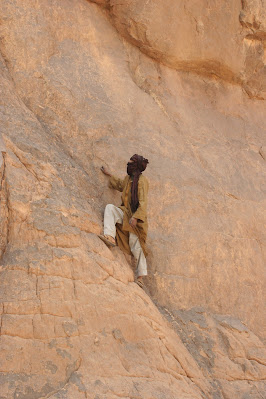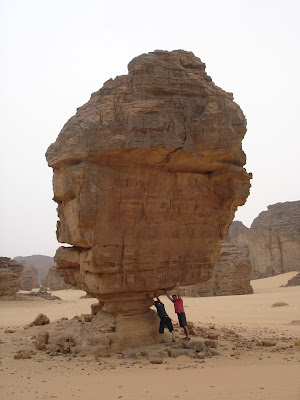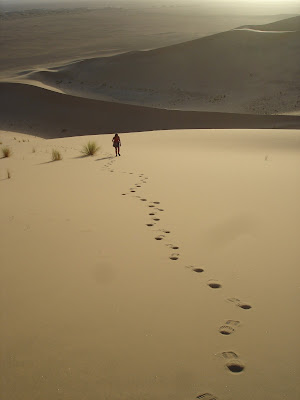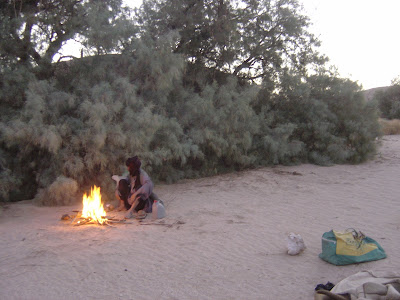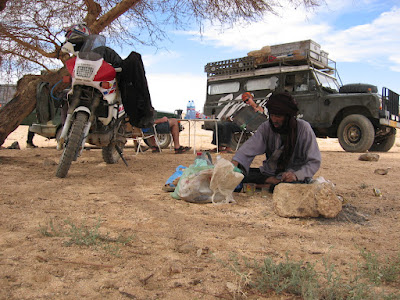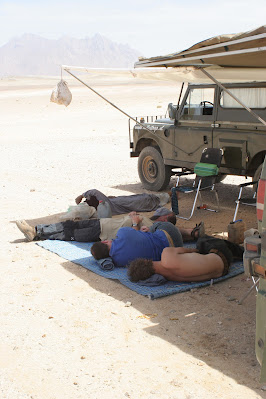On the first day we travelled north via Route National 3, turning off to explore a couple of canyons in the Tassili to the East. This is a beautiful area of eroded pinnacles.
At the deepest extent of the Essendilene Canyon was a murky green pool, but not enticing for a swim at this time of year. Haakon’s bike is very heavy, even though we carried his spare fuel and water, and hard to keep upright in heavy sand. If the bike goes over, he must get help to lift it, or else unload his bags. When he did not appear for a while we went back to look for him, and managed to get badly stuck in the sand.
For the next few days we meandered West and North West on the Route de Djafar. A diversion took us along a rocky track to deep guelta, where I enjoyed my one and only Sahara swim.
We passed South of Mt Tazat, and for a while travelled back on our eastward route. Somewhere along the way we passed the 10,000 mile mark.
As always, Djafar knows good places to camp, and led us to a sheltered spot with a view of spectacular high dunes. As we had some daylight, Leon decided to show us some dune driving, but was stuck before he left the camp. To be fair, the Dutch car handled the sand pretty well, and they rarely resorted to dropping tyre pressure.
As we sat on the crest of the dune in evening light, a lone Tuareg and his camels appeared on cue, crossing the plain below, the only other human we’d seen all day.
On April 16, we continued West towards the Tefedest mountains. Our lunch break was in an oeud with a concrete lined well. Since we only have enough water for drinking and cooking, we used the chance to drag up buckets of water from 30m below for a wash and shave.
We set camp in an area of tree islands, where erosion had left the root systems exposed so that each little tree was sitting on its own five metre high platform, one of which provided us with a windbreak. We have been eating well, and this night was especially good: aubergines fried with garlic in olive oil, then layered with tomatoes, tinned mushrooms and slices of Edam; all wrapped in tin foil and buried under the fire for half an hour.


